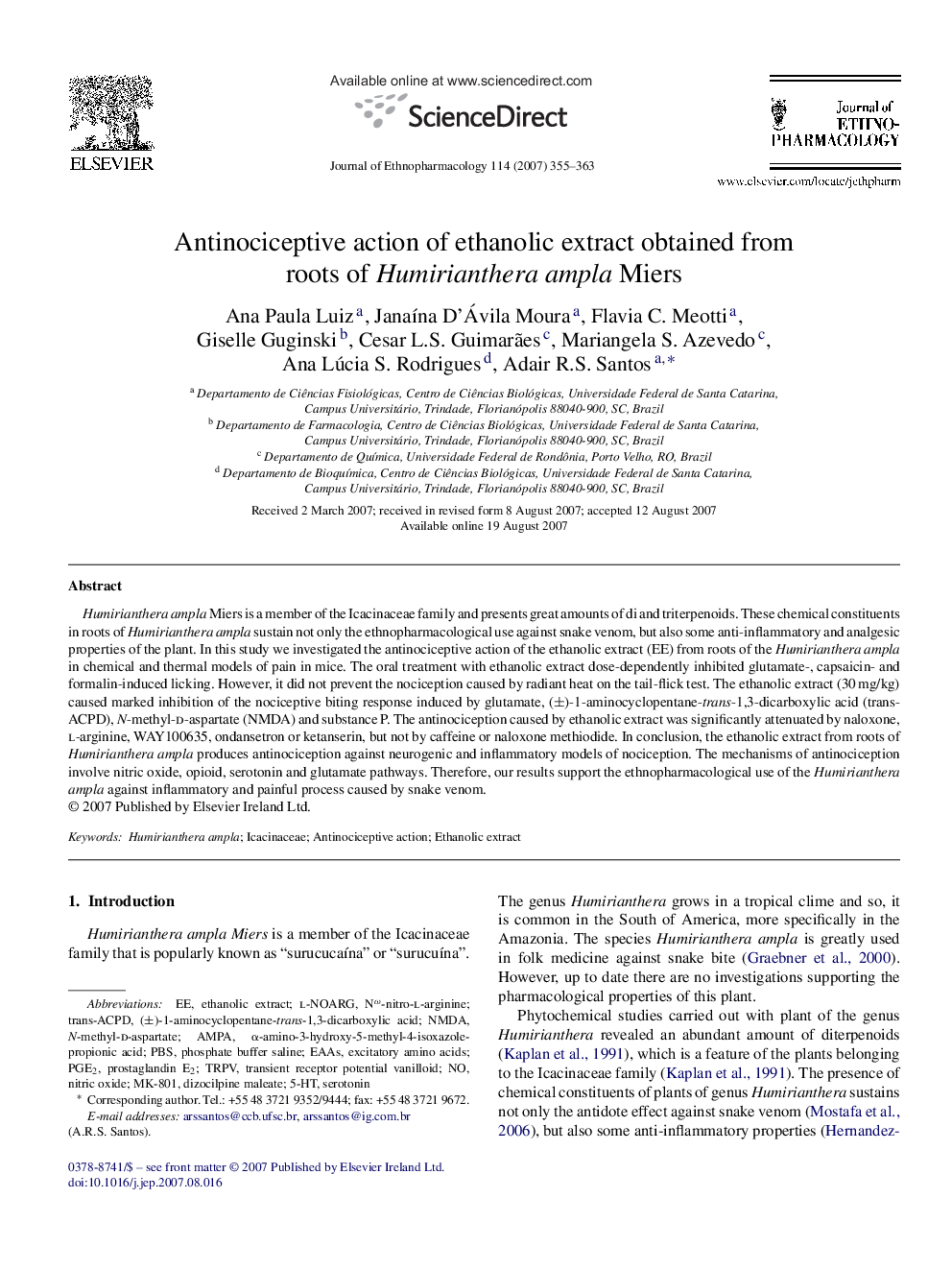| Article ID | Journal | Published Year | Pages | File Type |
|---|---|---|---|---|
| 2547796 | Journal of Ethnopharmacology | 2007 | 9 Pages |
Humirianthera ampla Miers is a member of the Icacinaceae family and presents great amounts of di and triterpenoids. These chemical constituents in roots of Humirianthera ampla sustain not only the ethnopharmacological use against snake venom, but also some anti-inflammatory and analgesic properties of the plant. In this study we investigated the antinociceptive action of the ethanolic extract (EE) from roots of the Humirianthera ampla in chemical and thermal models of pain in mice. The oral treatment with ethanolic extract dose-dependently inhibited glutamate-, capsaicin- and formalin-induced licking. However, it did not prevent the nociception caused by radiant heat on the tail-flick test. The ethanolic extract (30 mg/kg) caused marked inhibition of the nociceptive biting response induced by glutamate, (±)-1-aminocyclopentane-trans-1,3-dicarboxylic acid (trans-ACPD), N-methyl-d-aspartate (NMDA) and substance P. The antinociception caused by ethanolic extract was significantly attenuated by naloxone, l-arginine, WAY100635, ondansetron or ketanserin, but not by caffeine or naloxone methiodide. In conclusion, the ethanolic extract from roots of Humirianthera ampla produces antinociception against neurogenic and inflammatory models of nociception. The mechanisms of antinociception involve nitric oxide, opioid, serotonin and glutamate pathways. Therefore, our results support the ethnopharmacological use of the Humirianthera ampla against inflammatory and painful process caused by snake venom.
